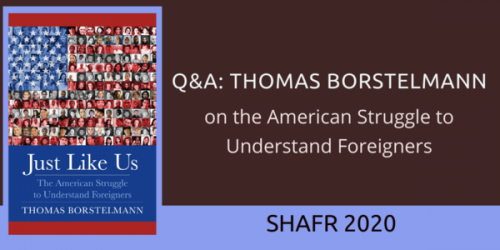Interview with Michael R. Cohen, author of The Birth of Conservative Judaism
The following is an interview with Michael R. Cohen, author of The Birth of Conservative Judaism: Solomon Schechter’s Disciples and the Creation of an American Religious Movement
Question: When did you begin your study of Solomon Schechter and his rabbinical students? What drew you to this research?
Michael R. Cohen: This research actually began for me as an undergraduate. While working on my senior thesis, which analyzed the Jewish community of Portland, Maine, I came across a rabbi who failed spectacularly in his attempt to bring Conservative Judaism to Portland in the 1920s. Pressed by my adviser Maud Mandel to dig deeper, I tried to figure out if this rabbi’s colleagues struggled as much to bring Conservative Judaism to their own communities. My research suggested that while they did struggle mightily, they were ultimately the ones responsible for the creation of Conservative Judaism in the United States. I decided to explore this topic in greater depth with Jonathan Sarna, who was also deeply interested in the ways in which Conservative and Orthodox Judaism separated and became distinct movements.
Q: Much of your research took place in incredible archives including the archive of the Jewish Theological Seminary and the American Jewish Archives. Can you describe some of the documents you worked with?
MRC: Some of the most fascinating documents I discovered were letters between the disciples, where they debated the meaning of a movement, the qualities that bound them together, and the future of American Judaism. What really shone through in these materials were the close personal friendships that remained with them throughout their lives. I also found letters between Schechter and his disciples, which vividly showed both the difficulty faced by the disciples in the field as well as the mutual respect and friendship between Schechter and his students.
Q: You draw some distinctions between the vision Solomon Schechter had for Conservative Judaism and the reality of its present form. How do you think Schechter’s Conservative Judaism differs from twenty-first-century Conservative Judaism?
MRC: Most importantly, Schechter never saw his form of Judaism as a third, separate movement. Instead, he believed that it would unify the American Jewish community. So, in that sense, twenty-first-century Conservative Judaism is far from his vision. But, in another sense, his broad platform of traditional Judaism infused with English, decorum, and modern education had failed miserably at the time of his 1915 death, but now, today, it characterizes the movement. In one sense, then, Schechter’s vision came true and in another sense it did not.
Q: If you were to ask Solomon Schechter one question, what would it be?
MRC: This is a tough question! I think I’d ask Schechter what he thought of his vision today. He was deeply disappointed with its progress at the time of his death, and I’d love to know how disappointed he would be with the lack of unity, and how happy he would be that his vision for American Jewry has been adopted by so many—both inside and outside the Conservative movement.
Q: You call Schechter’s rabbinical students his disciples. You argue that, like other leaders of new religious movements, Schechter was a charismatic leader. What are the qualities of a charismatic religious leader who attracts disciples?
MRC: The traditional definition of a charismatic leader comes from Max Weber, who argues that charisma applies “to a certain quality of an individual personality by virtue of which he is set apart from ordinary men and treated as endowed with supernatural, superhuman, or at least specifically exceptional powers or qualities. These are such as are not accessible to the ordinary person, but are regarded as of divine origin or as exemplary, and on the basis of them the individual concerned is treated as a leader.” While Weber’s charisma was applied originally to a gift of divine origin, it has also been used by scholars to apply to earthly qualities as well—“exceptional qualities,” as Weber terms them, which are regarded as “exemplary.” I use the notion of charisma in this context.
In addition to Weber’s definition, Lorne Dawson argues that there are five overlapping attributes that characterize charismatic leadership. Dawson maintains that charismatic leaders possess a “visionary” leadership style and that they are admired for their communications skills, and their ability to “frame problems and solutions in simple and appealing terms.” Moreover, Dawson argues that “charismatic leaders tend to be energetic people who exude self-confidence and determination” and “display a consistent faith in the fulfilment of their mission,” developing a “charismatic bond” with their followers.
It is in both these contexts that I view Schechter and his disciples.
Q: Your readers want to know, what are you working on next?
MRC: Now living and teaching in the South, I am turning my focus toward ethnic and family economic connections of southern Jewry. Specifically I am looking at the years after the Civil War and the economic role that Jews played during Southern Reconstruction. I am particularly interested in the relationship between Jewish merchants in the countryside and their coreligionists in New Orleans. I am also interested in understanding the links between Jewish merchants and wholesalers in New Orleans and their fellow Jews in New York. I think that these links will help us to better understand Jewish life from the Civil War to the beginnings of mass East European Jewish immigration to America.


